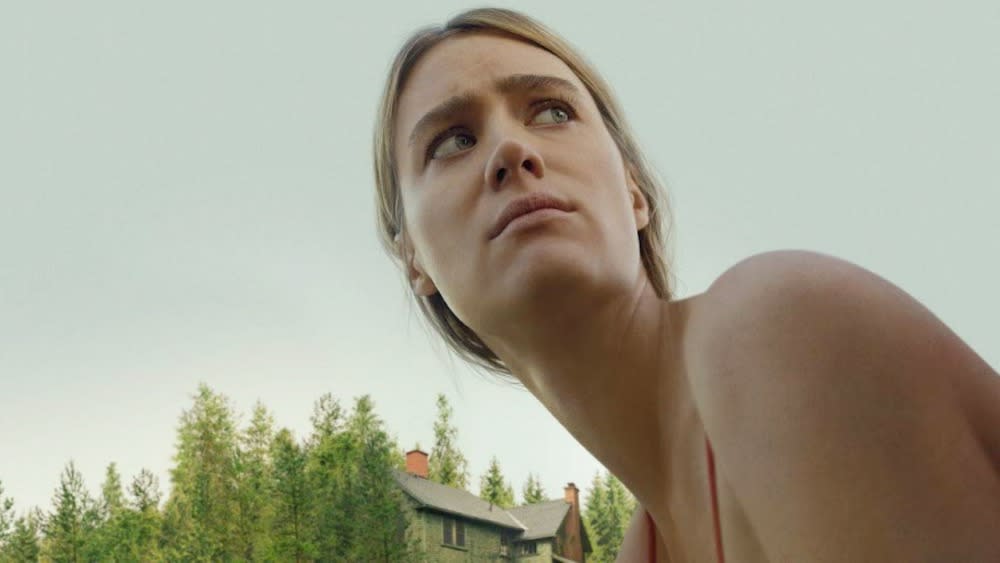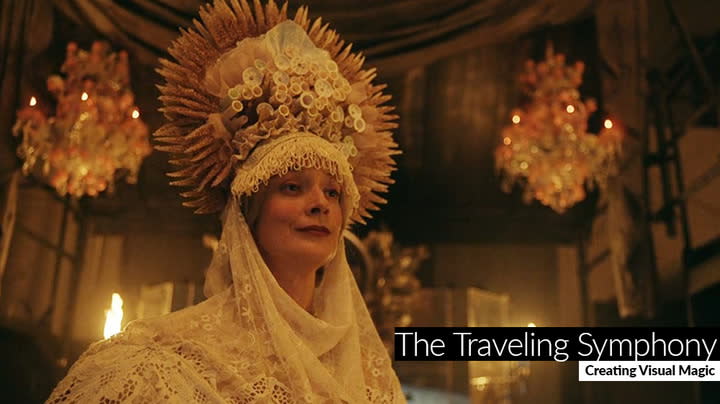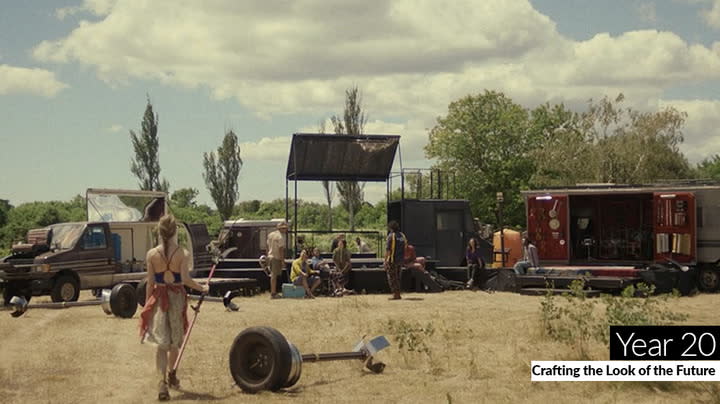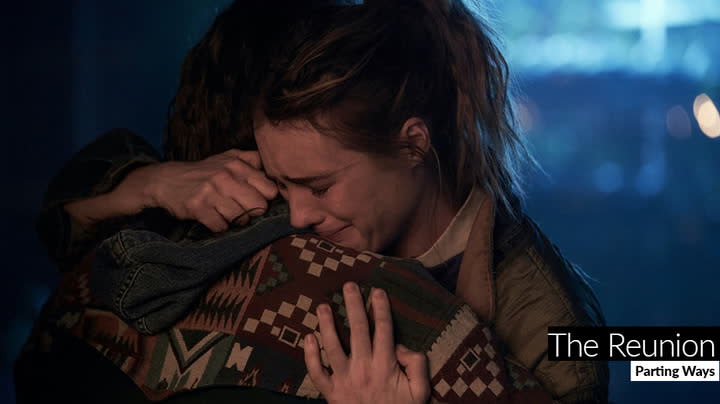How the ‘Station Eleven’ Finale Knit Together 20 Years of Love and Loss

- Oops!Something went wrong.Please try again later.
- Oops!Something went wrong.Please try again later.
- Oops!Something went wrong.Please try again later.
“Deep Dive” is a in-depth podcast and video essay series with the stars and creative team behind an exceptional piece of filmmaking. For this spring edition, the IndieWire Crafts team partnered with HBO Max to take a closer look at the limited series ”Station Eleven” with creator Patrick Somerville, star Mackenzie Davis, and nine key members of the creative team behind the series finale “Unbroken Circle.”
Endings are hard for any television show, but at times the odds of “Station Eleven” pulling off a satisfying conclusion seemed about as low as, well, surviving a global pandemic that wipes out 99 percent of the world’s population. There is an episodic nature to the series: Instead of stringing out one single story over 10 hours, creator Patrick Somerville and team explore the lives of a far-flung ensemble impacted by a deadly flu virus. “Station Eleven” skips freely through time, from the first hours of the flu to the collapse of modern civilization to the beauty of a rewilding world decades into the future.
More from IndieWire
The limited series couldn’t jump around forever, and when the disparate storylines collide, dramatically and physically for the series finale, “Unbroken Circle,” it presented a tremendous challenge for Somerville and his team: How, in just one 60-minute episode, can you pull these threads together to finish the series with a satisfying emotional resolve that’s true to the nuanced character studies and complexity the series spent the first nine episodes establishing? That’s the question associate craft editor Sarah Shachat explores with the “Station Eleven” creative team in the “Deep Dive” podcast:
You can listen to the podcast above, or by subscribing via Apple Podcasts, Spotify, or Overcast.
What you’ll learn in the podcast above is the success of the masterful finale was far less about the mechanics of plot, but rather complex emotional resolutions crafted from quiet, distilled, and beautifully simple moments of connection. “Station Eleven” is able to accomplish this, in part, because the big ideas Somerville and the writers were wrestling with as they were adapting novelist Emily St. John Mandel’s book are baked into each aspect of the filmmaking. In the video essays below we examine how this applies to the craft that went into creating The Traveling Symphony, the world-building of Year 20, and the quiet poignancy of Kirsten (Davis) and Jeevan’s (Himesh Patel) emotional reunion.

The Traveling Symphony: Creating Visual Magic
So much of “Station Eleven” rests on its depiction of roving Shakespeare performers who bring art to small communities of survivors 20 years after a pandemic wiped out civilization. “If the premise of the show was about this group that had kept each other safe by being together, by performing, by making art — but also just by having a community that looks out for each other in the way that the Traveling Symphony does — if that was all what the premise was? It had to pay off in a real way,” Somerville said. “Not just for the small audience gathered around watching at the airport, but for our audience. We had to prove it — that art helps you heal or surprises us with excitement. That a teenager can go wide-eyed at an amazing costume — we had to show it. We had to do it for the show to be the show.”
In the video above, you’ll watch Somerville, Davis, production designer Ruth Ammon, costume designer Helen Huang, director Jeremy Podeswa, and writer Sarah McCarron break down the various influences that went into sculpting the theatrical sequences, from how the eye-catching sets and costumes told the story of the Traveling Symphony to the impact theater has on the characters.
“When we finally got to do the theater scenes, it was so wonderful to get to see the costumes all together and these Polly Pocket-esque caravans that opened into full theatrical sets and drapes, and you see how that could feed people, when you get to see it all together,” Davis said. “It really felt like it justified this thesis that [members of The Traveling Symphony] would choose this life.”

Year 20: Crafting the Look of the Future
Being a part of The Traveling Symphony is not easy: The series never shies away from — and shows, in often painstaking detail — the realities of life without the comforts of electricity, retail, or manufacturing. Yet at the same time this was not a bleak post-apocalyptic vision.
“’Dystopian’ wasn’t a word we wanted to play with,” explained Podeswa. Somervile said, “We wanted it to be a place of freedom and opportunity. It needed to feel like a place you might want to go.”
This meant a great deal of thought went into everything onscreen during the parts of the show set in Year 20, and how it captures the ingenuity and creativity of survivors just trying to make sense of the world. “I just felt like the script was so lively and so full of hope, I wanted them to look organic and utilizing the world around them,” said Huang. “And obviously our world is colorful, and so if they’re using the remnants of this world they are colorful. I wanted the clothes to feel like it’s a time capsule into the things that we’ve lost.”
In the video above, watch how Huang, Ammon, and cinematographer Steven Cosens developed the scavenged, home-made, and distinctively non-dystopian look for the show’s civilization-free future.

The Reunion: Parting Ways
In the end, the series’ emotional arcs resolve with simple moments of two people talking to each other. As McCaron highlighted, the series was about “taking big formal swings,” and “then allowing for really simple, clear emotional moments to live and not have to be overly exposited or justified.”
“Station Eleven” very intentionally saves one final conversation for last. Kirsten’s reunion with Jeevan, 20 years and nine episodes worth of flashbacks in the making, could not have been depicted with more intentional simplicity. There’s even a sense of culmination in the fact the show doesn’t need to skip around anymore but can unfold in real time. “I just wanted to follow them… and very discretely travel with them,” Podeswa said. “And then when they land, they land in this perfect place, at this fork in the road. I don’t really reveal the fork until the end. That’s the last big moment when they go off on their separate ways. And I could feel that this is the end of the show.”
In the video above, watch how Podeswa, Somerville, Davis, Patel, composer Dan Romer, and editor David Eisenberg collaborated to create such a powerful ending.
VIEW ALL DEEP DIVE COVERAGE
Best of IndieWire
Sign up for Indiewire's Newsletter. For the latest news, follow us on Facebook, Twitter, and Instagram.

